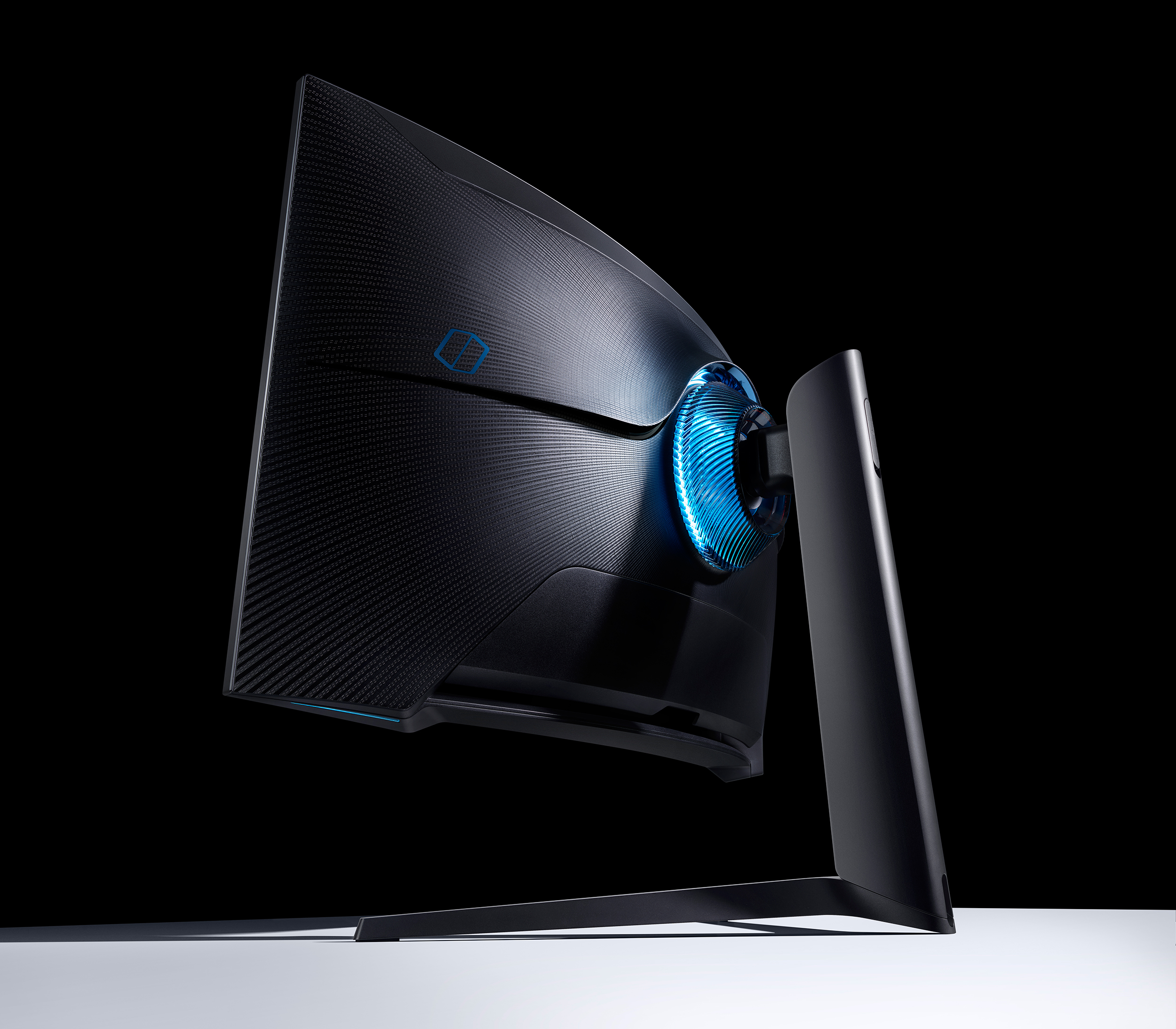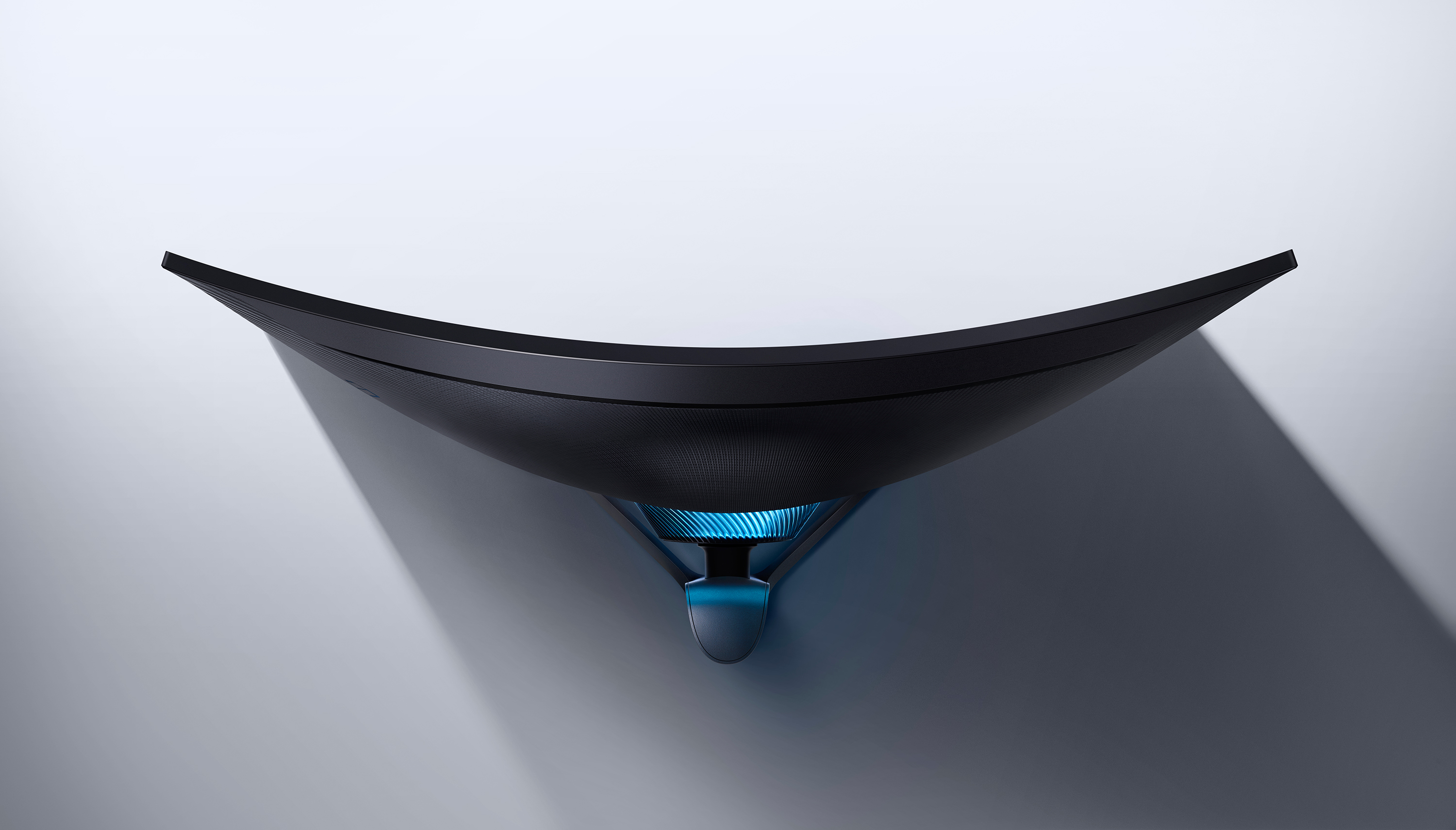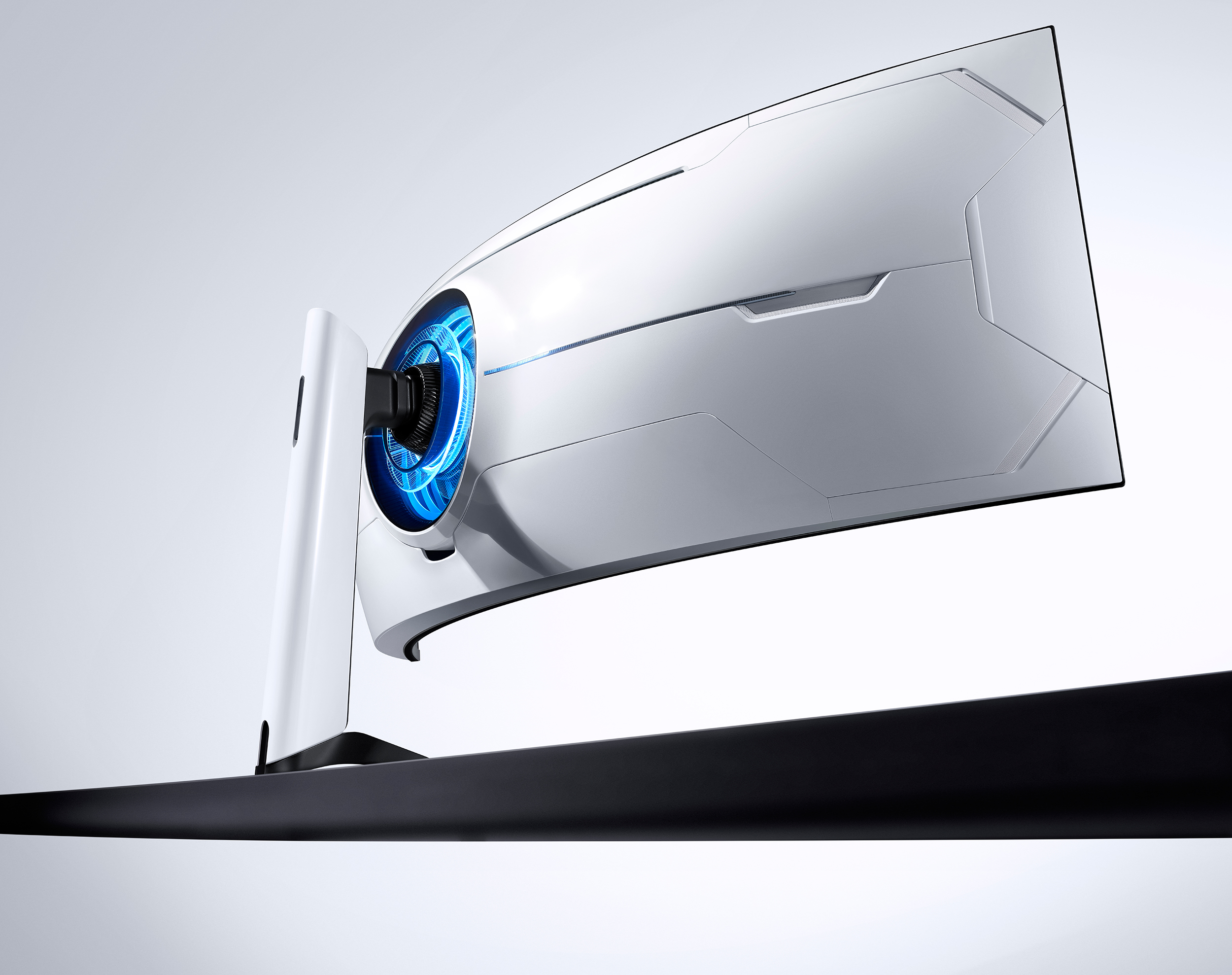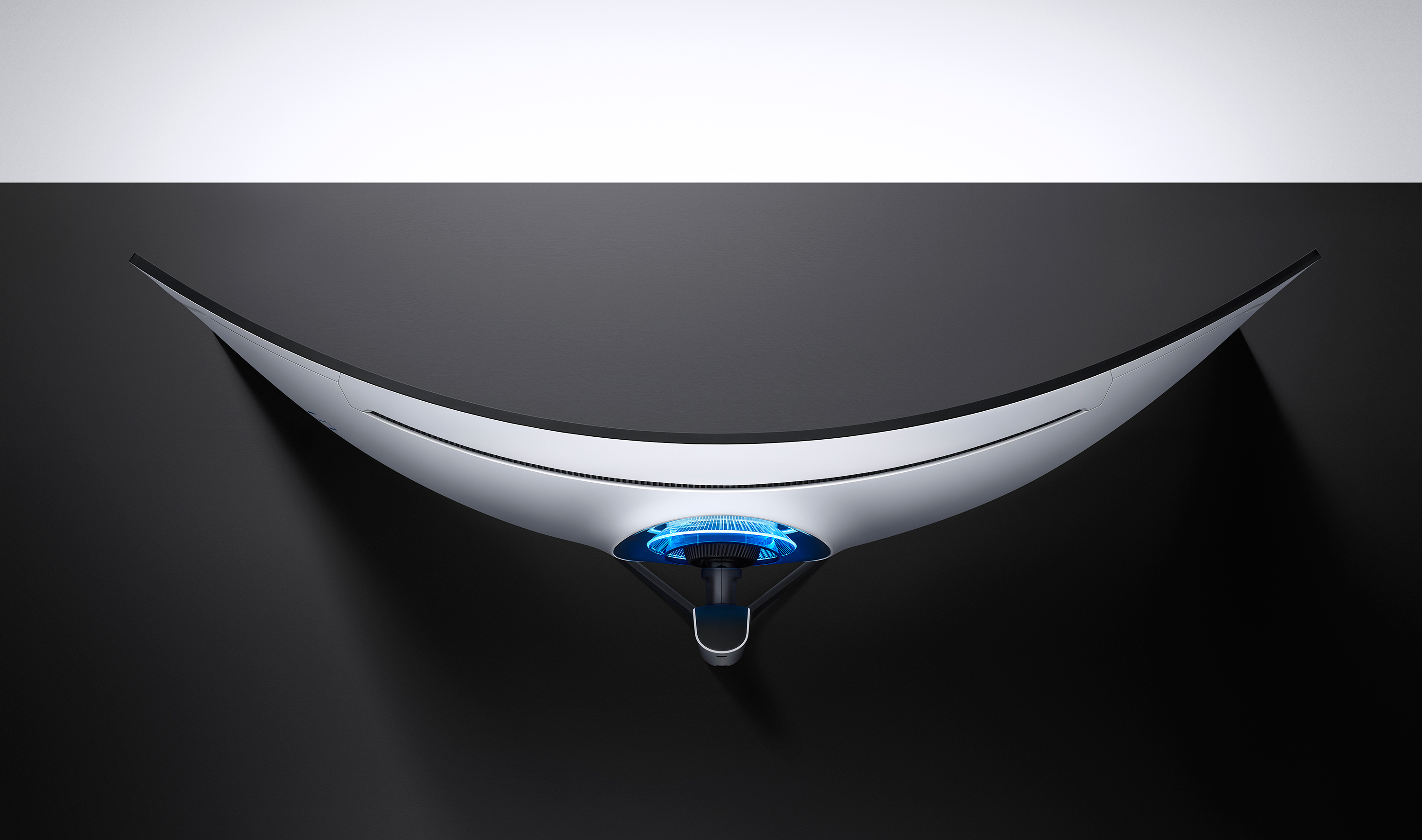Samsung is a brand that is now only known for its phones and tablets, but also curved gaming monitors like the CHG90. That’s why, ahead of CES 2020, Samsung is announcing that it will be sub-branding its new gaming monitors under the Odyssey name, and launching two new products designed to meet all the needs of modern gamers — the Samsung G7, and the Samsung G9.
Samsung G7
Starting first with the Samsung G7, this curved gaming monitor will come in both the 27-inch and the 32-inch sizes. It sports a QHD 2,560 x 1,440 resolution, a 240Hz refresh rate, and a 1 millisecond response time. This all ensures that gamers can get the most out of fast-packed games like Fortnite and Battlefield V that play great with higher refresh rates.
More importantly, however, the monitor sports a 1800R curve, which is deeper than the 1000R curve on previous generations monitors. According to Samsung, since the curve is deeper, this means that gamers will feel more immersed in the on-screen action.
Other features onboard the monitor include its support for HDR 600, and both AMD FreeSync 2 as well as Nvidia G-Sync. This ensures that gamers will be able to enjoy the stutter-free technology, regardless of which type of graphics card or PC they own. There is even a ring of light on the back that gamers can change the color of.
Samsung G9
Next, there’s the Samsung G9. Coming in at 49-inches, Samsung is calling this the world’s first dual QHD display, referring to its size that is similar to two 27-inch monitors. The resolution, meanwhile, comes in at 5,120 x 1,440, with the 32:9 aspect ratio.
The monitor sports the same refresh rate and FreeSync and G-Sync compatibility as the Samsung G7. Its curvature and design, however, are a bit different. The G9 sports a two-tone look that is similar to a stormtrooper from Star Wars. It is white in the back, but black in the front. The customizable ring of light is also here, allowing gamers to configure it as they see fit. The curvature is also at 1000R, similar to older monitors from Samsung. There is HDR1000 support, however, which is new — and unique to the G9.
Samsung did not share pricing on availability on these new monitors. However, last year’s 49-inch CHG90 curved monitor retails for $1,000, and the smaller CRG5 for $400. You can expect the new products to be in a similar price range.
Follow our live blog for more CES news and announcements.






